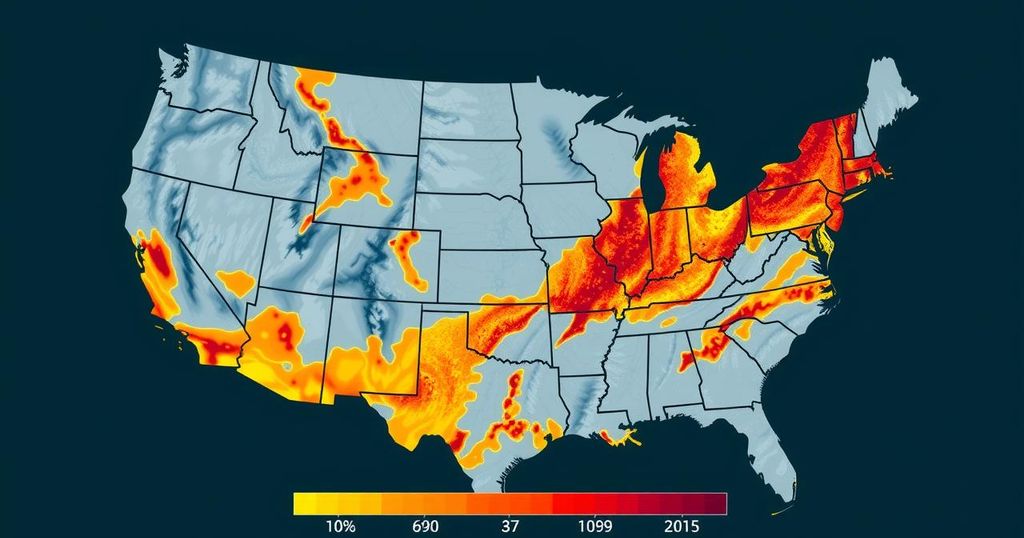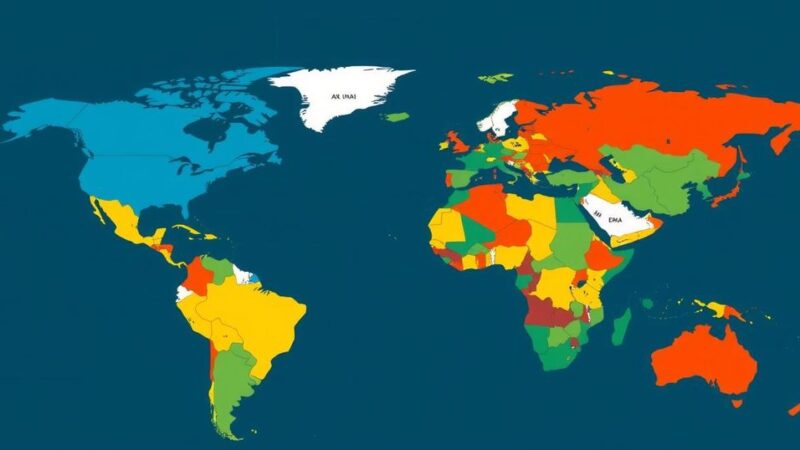A recent report indicates that drought-affected land has tripled since the 1980s, with 48% of the Earth’s surface experiencing extreme drought last year, escalating issues related to food security and public health. Regions in South America and the Horn of Africa are particularly impacted, with drought exacerbating health crises and malnutrition. The findings highlight a critical intersection of climate change effects, necessitating urgent responsive measures.
A newly published report reveals a dramatic escalation in drought-affected land across the globe, with the area impacted by drought tripling since the 1980s. According to the analysis by the Lancet Countdown on Health and Climate Change, nearly 48% of the Earth’s land surface underwent at least one month of extreme drought last year, a stark increase from the average of 15% recorded during the 1980s. Furthermore, 30% of the world faced extreme drought conditions for a duration of three months or longer in 2023, compared to just 5% in the earlier decade. The study indicates that the threshold for classifying extreme drought is met after six months of significantly reduced rainfall or elevated evaporation rates, which presents immediate threats to water and sanitation, food security, and public health. It also influences energy supplies, transportation, and economic stability. While there are various factors influencing drought severity, climate change has notably altered global rainfall patterns, leading to increased susceptibility to droughts, particularly in regions such as South America, the Middle East, and the Horn of Africa. In South America’s Amazon region, for instance, drought is undermining established weather patterns by killing trees that play a crucial role in raincloud formation, perpetuating a vicious cycle of drought. Simultaneously, extreme rainfall incidents have surged, with 61% of the world experiencing increased instances over the past decade, based on a comparison with the historical baseline from 1961 to 1990. The interrelation between droughts and flooding is complex; rising temperatures augment evaporation rates while warmer air increases moisture retention, culminating in more intense rainfall events following periods of drought. The report underscores alarming health implications associated with climate change, revealing that drought added 151 million more individuals to the ranks of food insecure last year compared to the 1990s, further exacerbating malnutrition. Additionally, heat-related mortality among those over the age of 65 has surged by 167% since the 1990s. The incidence of dengue fever is at unprecedented levels, with diseases like malaria and the West Nile virus expanding into previously unaffected areas due to warmer climates. The frequency of dust storms has also escalated, exposing millions to hazardous air quality. Executive Director of the Lancet Countdown, Marina Romanello, emphasized the rapid changes in climate. “The climate is changing fast,” she noted, “It is changing to conditions that we are not used to and that we did not design our systems to work around.” The report highlights individual accounts from regions suffering from water scarcity, including Hasakah in northeastern Syria, where families are resorting to digging wells that potentially contain contaminated water. The adverse effects of drought are stark, prompting residents to voice desperation for water access. In South Sudan, nearly 77% of the populace faced drought last year, while concurrently battling flooding, illustrating the dichotomy of climate impacts.
The increasing severity and frequency of droughts across the globe can be attributed in significant part to climate change, which is not only modifying rainfall patterns but also intensifying extreme weather events. This report serves as a critical index for understanding the far-reaching ramifications of drought on human health, food security, and overall socio-economic stability. It emphasizes the necessity for urgent action to mitigate the causes of climate change as well as to adapt to these evolving environmental conditions.
In summary, the report by the Lancet Countdown starkly illustrates the alarming growth in the extent of drought-affected areas since the 1980s, spotlighting a critical public health crisis influenced by climate change. The wide-ranging effects on food security, health outcomes, and water availability underline the urgent need to address climate-related challenges. Taking decisive action to mitigate greenhouse gas emissions is vital to prevent further escalation of these issues and to safeguard vulnerable populations worldwide.
Original Source: www.bbc.com






